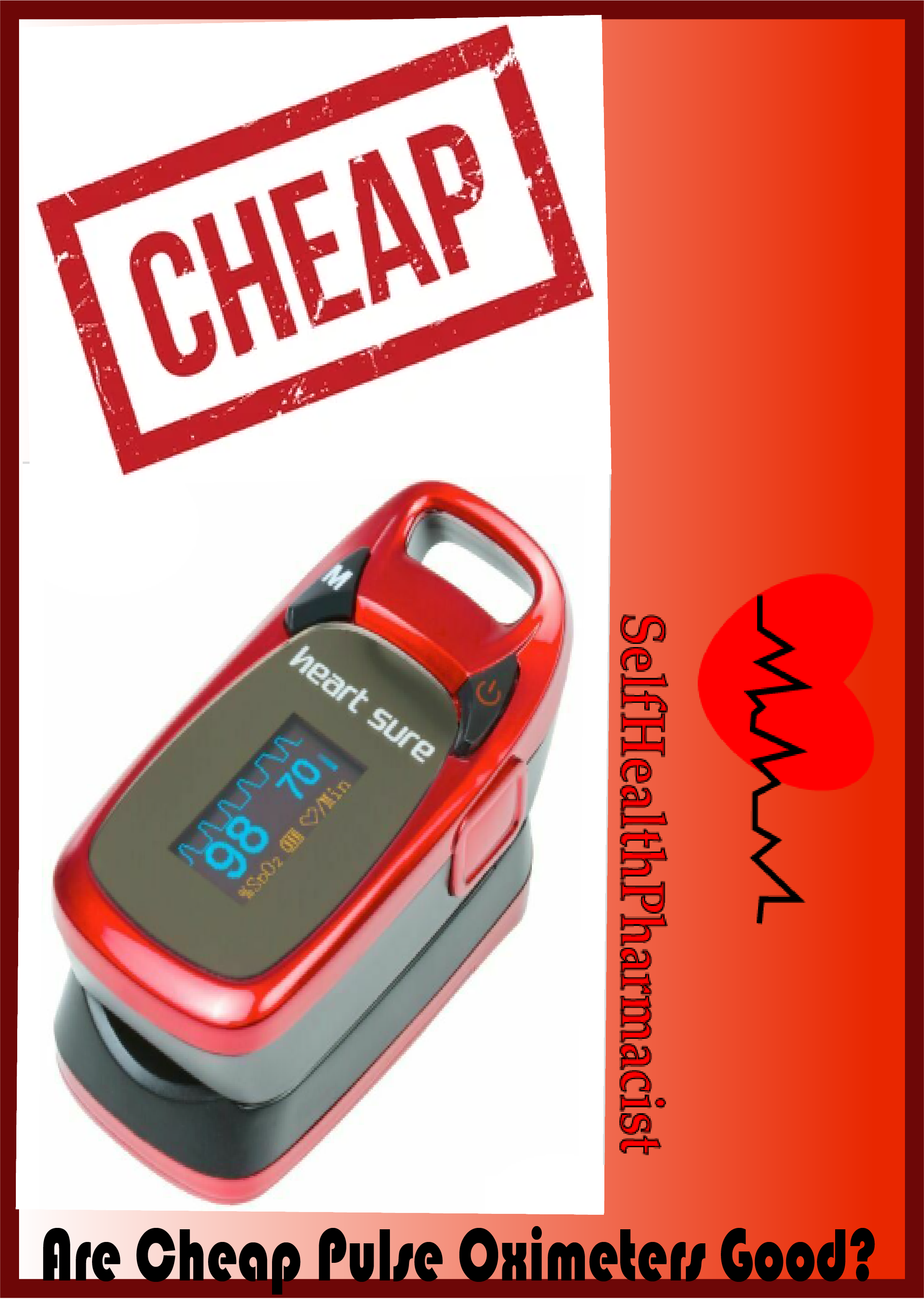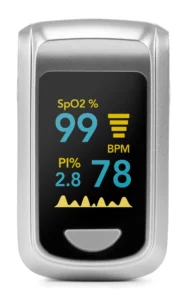I hope that this article will be useful for you in choosing the right device for what you need.
The pulse oximeter is a device that has become known since the beginning of the pandemic.
It helps to measure the concentration of oxygen in the blood, this indicator is called saturation (SpO2).
Pulse oximetry is used for various lung diseases to indicate when the level of oxygen in the blood begins to decrease. And take measures to increase it and further maintain a normal level.
The best oximeter in the market right now is Pulse X Pro, Check out my full review here.
Oxiline Pulse X Pro is currently the best fingertip pulse oximeter on the market with the easiest adjustment to your smartphone.
It can measure your Saturation Measurements and Perfusion Index in several seconds with 98% accuracy!
Table of Contents
Are Сheap Oximeters Accurate?
No, cheap Oximeters are not accurate.
When buying a device, be sure to pay attention to the availability of a license and a manufacturer’s quality guarantee. This will allow you to exchange or return the funds spent on the pulse oximeter if it turns out to be defective and / or has any damage.
The cost of pulse oximeters is also worth paying special attention to. It is not recommended to buy cheap devices, although they are the most affordable, but nevertheless, they are short-lived.
Even replacing the batteries does not guarantee the further stable operation of the device and the accuracy of the readings during the measurement.
Devices in the mid-price category are reliable, saturation readings can usually be trusted, and errors are minimal or non-existent.
Expensive pulse oximeters are often used in hospitals.
But they justify their price, as these devices have a number of useful features mentioned above, and they are also durable.
However, for home use, it is recommended to purchase a portable clip-on pulse oximeter.
How Do I Know If My Oximeter is Accurate?
To know if your pulse oximeter is accurate, you can test it.
Put it on your own finger. The pulse line should be clear. You can test on several patients at once, compare the results and draw a conclusion. Inaccurate information is determined in case of carbon monoxide poisoning (after fires).
When the saturation is below 94%, you need to doubt the correct operation of the oximeter.
Reposition the device. Perform the measurement several times. Follow the pulse wave.
If the problem persists, turn off the sensor and turn it on again.
Is Pulse Oximeter Accurate When Lying Down?
No, pulse oximeters are not accurate when lying down.
Saturation should be measured while sitting.
This is due to the fact that a person breathes differently in different positions. In particular, in the supine position, especially on the back, the stomach limits the volume of the lungs, and the person breathes more shallowly.
Consequently, oxygen saturation will be significantly lower – by several units. For example, if a person measures saturation while lying down, he may have an indicator of 91% on a pulse oximeter, and while sitting, he may well become 95%, the physician explained.
Here are Five reasons more for incorrect work of a pulse oximeter:
The result can be distorted:
- Age spots on the skin, varnish, acrylic, gel on nails;
- Bright artificial or natural lighting;
- Trembling, Movements;
- Poor perfusion, blood supply to a specific part of the body;
- Intoxication caused by carbon monoxide.
The nail polish is able to absorb light from the device.
In some cases, this prevents the determination of oxygenated hemoglobin.
It is allowed to fix the sensor on the side surface of the finger. The pigment on the skin can also distort the results. The paint blocks the signal. The oximeter is not fully functional.
Instead of fingers on your hands, attach the device to your toe or earlobe.
An error is indicated by a non-constant pulse waveform.

What are the Disadvantages of Cheap Fingertip Pulse Oximeters?
Cheap pulse oximeter is very small-sized, the display and the control button (usually there is only one) are located on the upper side of the sensor housing, there are no wires or connections.
Due to their low cost and compactness, such devices are now widely used.
They are really convenient for a one-time measurement of saturation and heart rate, but they have significant limitations and disadvantages for professional use and monitoring, for example, in the conditions of an ambulance team.
Main Disadvantages of Cheap Pulse Oximeters:
1.Poor visualization during monitoring: when the patient is on a stretcher, you have to constantly approach or bend down to the finger with the sensor, cheap pulse oximeters have a monochrome screen that is difficult to read at a distance (it is better to buy a color one), you have to perceive or switch an inverted image, incorrect perception of an image like SpO2 = 99% instead of 66%, PR=82 instead of SpO2=82 can be dangerous.
2.There is no extended and complete functionality in the menu: adjustable alarm limits for each parameter, the volume of the pulse and alarms, ignoring a bad signal, plethysmogram mode, etc., if there are alarms, they will sound and distract all the way, or turn off all at once.
3.The problem of poor visualization cannot be underestimated.
Good Visibility in any light and at any distance, allows you not to be distracted from more important tasks in working with a seriously ill patient.
4.Possible difficulties, leaks and breakdowns during disinfection: the disinfectant completely “as infectious” processes not only the sensor itself, but also the screen and button of the device, which may not withstand such processing.
5.The need to remove the batteries during long-term storage: if the pulse oximeter is used infrequently (for example, in a home first-aid kit “on demand”), the batteries inside the device leak and damage it, for long-term storage, the batteries must be removed and stored nearby, while the fragile plastic of the battery cover and it’s the lock may not withstand repeated closing and opening of the compartment.
FAQ
How Does a Cheap Pulse Oximeter Work?
The principle of operation of all pulse oximeters is the same. All have sources of red light – diodes, light-sensitive sensors and a monitor with a display on which the result is displayed.
A pulse oximeter is usually like a clothespin that you attach to your finger.
The diodes and sensors at the clothespin are inside, and the display is outside. When a clothespin is put on a finger, a beam of light passes through it. And since oxygenated arterial blood transmits light differently than arterial blood in which there is little oxygen, the sensor captures the deviation from the norm and displays the result on the screen.
Are Cheap Oximeters Good?
No, it is not recommended to buy cheap devices, although they are the most affordable, but nevertheless, they are short-lived.
Even replacing the batteries does not guarantee the further stable operation of the device and the correctness of the readings during the measurement.
